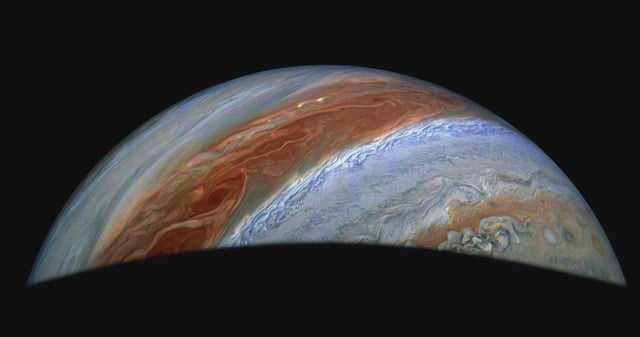Overview
- Juno’s instruments have confirmed that about 10% of Io’s surface harbors still-warm magma beneath its cooled crust, offering insights into the moon’s rapid surface renewal.
- The most energetic volcanic eruption ever recorded on Io, first observed on December 27, 2024, remains active as of March 2, 2025, with more data expected from an upcoming flyby.
- Radio occultation experiments have revealed that Jupiter’s north polar stratospheric cap is 11°C cooler than its surroundings, with winds exceeding 100 mph.
- Juno’s observations of Jupiter’s polar cyclones show their movements are influenced by beta drift, causing them to cluster, interact, and oscillate around the pole.
- The mission’s extended orbit continues to provide unprecedented views of Jupiter’s extreme radiation belts and dynamic planetary system, advancing our understanding of its atmospheric and geologic processes.

